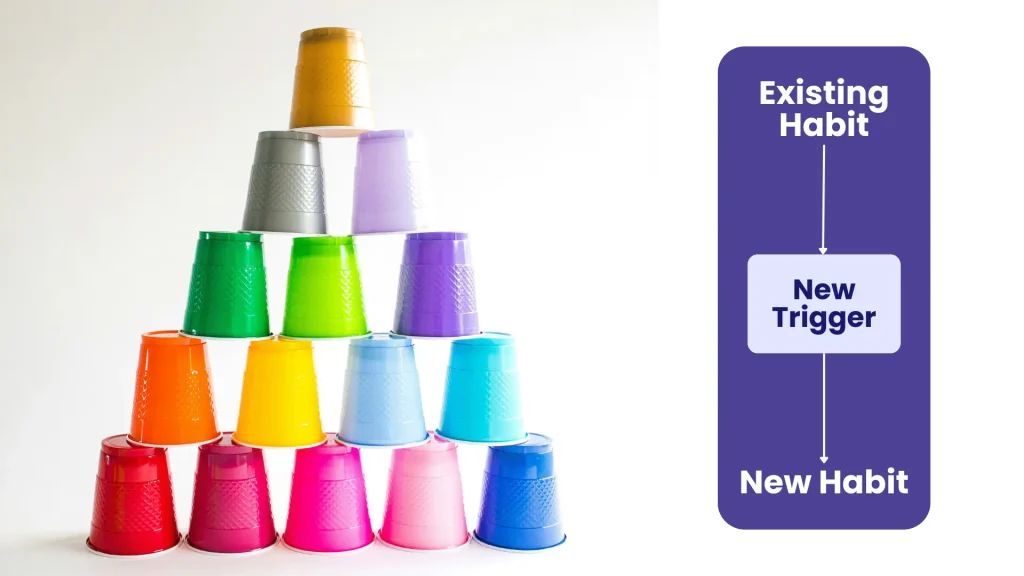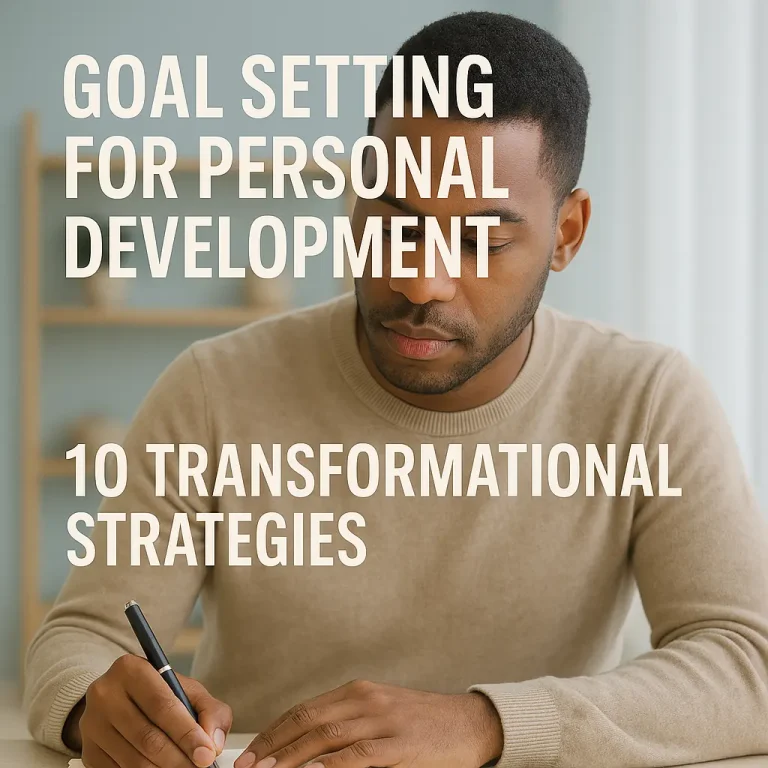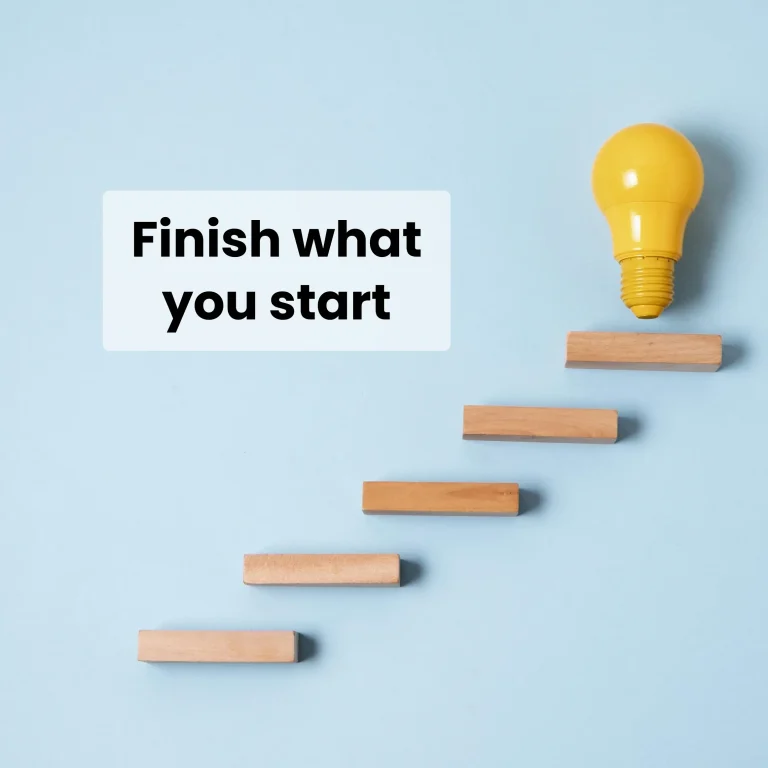Habits deserve more credit than they get (not that they’re asking for it), period. Also almost 90% people don’t know how to build habits that stick.
Did you know that about 43% of the day you are on autopilot? That means, your habits are in charge then, running the show without you even realizing it. They’re not just the things you do daily; they’re your behavioral patterns, your ways of responding, and even your emotional reactions. Pretty wild, right?
But here’s the kicker—while habits are the backbone of our daily routines, building new ones isn’t always a walk in the park. In fact, about 90% of us struggle to stick with a new habit for just one week. So, what gives?
Well, let’s get real for a second. We all know where we tend to stumble when it comes to making those good habits stick. Maybe it’s hitting snooze instead of hitting the gym or reaching for the cookie jar instead of the fruit bowl. We’re here to help you crack the code of building habits that actually last.
Before you dive deeper into the proven habit-creation strategies, you should also know how exactly these habits work.
What is a Habit and How Does it Work?
A habit is like a routine or behavior you do without thinking about it. It’s something you do automatically without involving much thinking because you’ve done it many times before.
Wait but how does it exactly work?
Well, according to James (you must know him from Atomic habits-the book, not the movie) it’s like a little system in your brain:

- Cue:
- This is like a signal that tells your brain it’s time to start the habit.
- It could be anything, like a time of day, a feeling, or a place.
- Craving:
- When you notice the cue, you start to crave something.
- This craving is what makes you want to do the habit.
- Response:
- This is the actual habit itself – what you do in response to the cue and craving.
- It’s like your brain’s way of satisfying that craving.
- Reward
- Once the habit is done, your brain rewards you. This could be a good feeling, like satisfaction or happiness.
- This makes your brain want to do it again the next time it encounters the cue.
To make this easier to understand here’s an example:
- Habit: Snacking when you feel bored.
- Cue: You get bored
- Craving: You start craving something tasty
- Response: You head to the kitchen and grab a cookie
- Reward: Eating the cookie gives you a little burst of happiness.
Next time you feel bored, your brain remembers how good that cookie made you feel, so it nudges you to snack again.
Now that you know how the habits are created, working with our actionable strategies to build habits that stick (for real) will become pretty easy.
Ready? On your mark, Get-set, Go:
11 Actionable Ways to Build Habits that Stick
1. Start Small
Related Habit Building Pillar: Cue
Starting something new might be exciting for you, but your brain sees it as a threat. Change can be difficult for the brain but you can help.
Introduce Tiny habits
Spilt your ultimate goal into tiny tasks. Let your brain get familiar with it.
- Choose something manageable: The tasks should feel easily doable. Start with something you can do without putting in much effort.
- Focus on the first step: Your first step will be like laying the first brick. Do it with utmost dedication and have fun. It’ll be worth it.
- Build confidence: With each tiny task when you see yourself closer to your end goal, you’ll feel encouraged to be on track.
Build Momentum Gradually
1% improvement a day is almost 37% a year. That means, you’ll be 37 times better than when you started. Yoo-hoo!
- Increase slowly: Gently, keep adding more time, more repetitions, etc. Be mindful that it shouldn’t feel much harder than the last time.
- Celebrate progress: Every step forward deserves some celebration. Pat yourself on the back for each milestone you reach.
- Be patient: Remember, big changes don’t happen overnight. Be patient with yourself and trust the process.
Example: Reading
- Start with reading one page a day.
- Increase to two pages after a week.
- Gradually build up to a chapter a day.
2. Set Clear Goals
Related Habit Building Pillar: Craving
Habits literally cannot be built in a day or two. On average, it takes about 66 days to make it automatic. It’s a long road ahead, why not build milestones? In fact, setting a clear goals is one of the top ways to increase productivity in life.
Define Your Goals
This is as easy as it gets. Defining specific and measurable goals will not only help you stay on track but also give a preview of what it’ll look like by the end.
- Be specific: Be as specific as you can. Instead of saying, “I’ll drink more water every day,” say, “I’ll drink 3.5 liters of water every day.” This will help you to know the exact actions required.
- Set SMART goals: Use the SMART goal-setting criteria (Specific, Measurable, Achievable, Relevant, Time-bound) to build an actionable framework.
- Establish a clear pathway to success: When you have a clear idea of the milestones, you will not be lost and can focus on the work.
Build a Roadmap
A roadmap brings together your what, why, how, and when. You can easily create your roadmap with our free goal-setting cheat sheet (you are welcome).
- Add checkpoints: Put your ‘Hows’ as checkpoints and attach them to your timeline.
- Follow through: Make sure to be in touch with your roadmap at all times. Also, check off the milestones achieved, and if you lag feel free to make changes.
Example: Walk Daily
SMART goal setting for your daily walk:
- S (Specific): I will walk daily.
- M (Measurable): I’ll complete 8k steps during the walk.
- A (Achievable): I’ll start with 3k steps and gradually increase by 500 a week.
- R (Relevant): Doing 4k steps in the morning and doing the other 4k before dinner.
- T(Time-bound): I’ll be doing 8k steps per day by the end of 3 months.
3. Be Consistent
Related Habit Building Pillar: Response
Consistency can be a game-changer in your habit-building process. Taking some action every day will keep you in the habit loop.
Stick to a Regular Schedule
Once you know when you have to do your routine, block that time to steer away from distractions.
- Put it on your schedule: Having specific time dedicated to your new behavior will make you act on it more habitually.
- Use reminders: Setting reminders will act as a nudge for you to get started.
- Repeat the behavior daily: Practice makes perfect progress.
- Build regularity: When you routinely practice, you not only allow your brain and body to adapt to the budding habit but also make it second nature for you as well.
Example: Learning a New Language
- Pick a language you want to learn and pick the resources from where you’ll be learning.
- If you use an app, turn on your notifications, as it’ll remind you to practice.
- Daily aim to learn new words, revise the older ones, and practice conversation.
- You can practice it on your work commute, work breaks, or watch a movie in that language. A better plan would be to have a dedicated time slot for it.
4. Anchor to Existing Habits

Related Habit Building Pillar: Cue
Anchoring new habits to existing routines is a smart way to make them stick. It’s like hitching a ride with a habit you already have, making the new one easier to adopt.
Attach New Habits to Existing Routines
Use your pre-built routines to accommodate the new behaviors. Always be on the lookout to see what goes together.
- Club habits together: Pair a new habit with one you already do regularly. For example, if you want to start flossing, do it right after brushing your teeth.
- Try different combinations: Experiment with pairing different habits to see what works best for you. Maybe combine stretching with watching TV.
- Take Your Time: Figuring out the best combinations needs a lot of trials. More trials, more efficiency. So, keep trying.
Leverage Existing Triggers for Consistency
Use your current routines as triggers for new habits. For instance, let your morning coffee remind you to write in your journal.
- Observe your triggers: Pay attention to what you already do automatically and use those moments to introduce new habits.
- Try a different response: If you usually check your phone first thing in the morning, replace that with a few minutes of reading.
Example: Hydration
- Attach: Drink a glass of water right after you brush your teeth in the morning.
- Combine: Pair drinking water with taking your daily vitamins.
- Experiment: Try different times of the day when you already have established routines, like right before lunch or dinner.
5. Create Accountability
Related Habit Building Pillar: Response
This habit-creation journey is solely yours. But having someone to cheer you on will be like a cherry on top.
Share Goals With Others
Sharing your journey with others can make it feel less lonely. And if you find someone who’s on the same road as yours, even better!
- Start putting it out: Talk about it with others and if you find somebody who’s been on the same path as you, learn from their experiences, and don’t be shy about sharing yours too.
- Build a support system: When you’ve got people rooting for you and checking in on your progress, it adds a little extra motivation to keep going.
- Find an accountability partner or group: Find someone who can be a part of your journey and your biggest cheerleader (after you).
- Look for people who are on the same journey: Journey buddies will keep you on track and motivate you when the going gets hard and you can do the same for them.
- Hire someone to keep you on track: Does meeting highly dedicated people like yourself sound unlikely? Hire an accountability partner. They’ll keep you on track, hold you to your commitments, and give you that extra push when you need it most. Plus, they’ll be there every step of the way to celebrate your wins and help you navigate the inevitable bumps in the road.
Example: Learning
- Take a course; look for people who have already taken it and connect with them.
- Start it with a friend or a family member sharing the same interest.
- Look for a community online around the same topic.
- Hire an accountability partner to turbocharge your learning process and keep you going.
Get That Habit Going With an Accountability Partner
and Increase Your Chances of Reaching the Finish Line by 95%
6. Stay Flexible
Related Habit Building Pillar: Response
You have a long journey to take, chances are it may not go exactly as planned. It can be due to unforeseen situations or factors completely out of your control. In these situations, adopting alternatives can make it easier to reach your end goal.
Adapt to Challenges and Setbacks
Remember, you’re the boss here, not the challenges. Don’t let them knock you off course or make you throw in the towel.
- Be optimistic: Fake it till you make it, even our brains don’t know the difference so just hold on to the picture of all the efforts paying off.
- See it as an opportunity: Setbacks are the biggest lessons and hold in opportunities. Opportunities to try something new, change your outlook, and adapt to a new way of doing and thinking. Take it as a blessing and run with it.
Modify approach as needed for success
With time you’ll become aware of the strengths and weaknesses of your habit-build strategy. Try to convert the weakness to a strength or alter it altogether.
- Modify Your Strategy: There are numerous possibilities to reach your destination. If path A is not working, go for path B, C, or D. Remember there are 26 alphabets.
- Hit and try: Try different approaches, don’t run away from starting it all over again. With each try, you become more efficient and develop confidence in your abilities.
Example: Eating Healthy Meals
- Goal: To eat healthy meals for all dinners throughout the week.
- Challenge: Cannot prep and cook every day due to time constraint.
Modified approach
- Prepping and shopping for the ingredients beforehand on the weekend.
- Looking for quick recipes.
- Using a meal planner to plan the weekly meals.
7. Track Your Progress

Related Habit Building Pillar: Reward
Tracking—sounds like a chore, right? But, Habit Tracking = Habit Hacking. Tracking not only gives a clear snapshot of where you’ve been but also helps navigate where you’re headed. It’s like having a GPS for your goals!
Keep a Journal or Use Habit-Tracking Apps
You can either journal or use a habit-tracking app, whichever suits you best. But using a habit-tracking app gives you a more visual representation, helps you set reminders, and can be updated easily.
- Monitor your performance to stay motivated: Keeping track of your progress not only tells you what is not working out but also the strengths and the things that are working best for you.
- Check off your milestones: You are already aware of the milestones for automating your new behavior, every time you reach it, scrape it off. Now it’ll help you focus with added zeal on the next milestone.
- Motivate yourself: Just do it for the sake of inspiration and it’ll ultimately help you stay on track.
Example: Build an Exercise Routine
- Use an exercise app that will have beginners’ exercise routines.
- With each passing day, tick off the exercises which you complete.
- Increase your intensity when you get too comfortable with the previous one.
- Every time you see an improvement, click a picture to be motivated.
8. Celebrate Progress
Related Habit Building Pillar: Reward
Receiving rewards is the best way to encourage any living being to do more of what they are doing.
Acknowledge Small Wins
You should be proud of what you are building. You’re making strides toward your goals, and that’s something to be proud of! It’s like building a brick wall—one brick at a time. So, why not treat yourself to a little celebration for each brick you lay down?
- Notice the progress: While you are tracking your progress and you see some positive shifts, give yourself a well-deserved pat on the back.
- Celebrate tiny achievements: It’s these little victories that add up to big success in the long run and celebrating is the key to staying motivated and keeping your momentum going.
- Take inspiration: Make an achievement journal and note all the wins in it. Whenever you feel like giving up, just go back to the journal.
Example
- Exercised for 5 days a week? Give yourself a well-deserved chocolate cookie.
- Followed through the sleep schedule for 10 days? Have breakfast in bed the next morning.
9. Practice Self-Compassion
Related Habit Building Pillar: Reward
It’s completely normal to hit a few bumps in the road on your journey to forming new habits. If things don’t go exactly as planned, don’t beat yourself up over it. Remember, Rome wasn’t built in a day, and neither are habits!
Be kind to Yourself During Setbacks
Don’t let setbacks get the better of you. Remember, no matter what, it’s you who has to do the heavy lifting. Root for yourself.
- Don’t be hard on yourself: You were never promised an easy, linear journey. So when the going gets hard, calm yourself down and tell your brain that it’s going to be okay.
- Understand what went wrong: Focusing on how bad the situation is won’t get you anywhere. Instead, try to divert your attention towards crisis management. Look for what can be improved.
- Make the changes: Always be open to change when something is not working. Figure out your new strategy and implement it promptly.
Focus on progress rather than perfection:
Be it a little or a huge progress, it is your only way towards your goal.
- Make the changes Always be in for a change when something is not working. Figure out your new strategy and implement it promptly.
- Focus on progress rather than perfection Be it a little or a huge progress, it is your only way towards your goal.
- Progress over perfection The important thing is to keep moving forward and stay committed to your goals. After all, progress, not perfection, leads to lasting change.
Example
Instead of being self-critical about why you didn’t lose the pound by the end of the week, look for what didn’t work out, make the changes to the routine, and try again.
Example
- Instead of being self-critical about why you didn’t lose the pound by the end of the week, look for what didn’t work out, make the changes to the routine, and try again.
10. Visualize Success

Related Habit Building Pillar: Craving
Your brain doesn’t really know the difference between mental and real. Creating the mental image of you achieving your goals fires up the same parts that actually experience the achievement.
Picture Yourself Accomplishing Your Goals
By vividly imagining your victories, you’re not only boosting your commitment to your goals but also programming your mind for success.
- Picture It!: Take a moment to picture yourself accomplishing your goals—imagine what it feels like, what it looks like, and even what it sounds like. Wonderful, right?
- Use affirmations: Using affirmations is like strength training your brain. It also builds confidence and encourages you to keep going.
Use Visualization Techniques
Visualization techniques can help you stay focused, motivated, and confident in your ability to achieve your objectives.
- Rehearse it mentally: Take moments throughout the day to revisit your visualization routine for an extra boost of motivation.
- Vision Boards: Get creative with your visualization by creating inspiring vision boards and placing them where you can see them regularly. Notice how it energizes you!
11. Stay Committed
Related Habit Building Pillar: Response
Doing a routine over and over again takes a lot of effort, dedication, and sometimes even sacrifices. Make all of it count.
Stay Dedicated to Your Goals
Continuous motivation is not there before the action but through the action.
- Commit to your goals: There is nothing more effortful than being committed. Whether you do it or not, the choice is yours to make.
- Always take action: Someday don’t feel like going all in, do something small. Your small actions will compound and give you the desired results.
Remind Yourself of the WHY
Every action you take has a motive. Remind yourself of it often.
- Focus on your WHY: Know your why like the back of your hand. Let it be your biggest inspiration and help you do the magic.
- Go big or go home: Be bold, be brave, and push yourself to get it done. The day is not far when it’ll come automatically to you.
Example
- Build yourself a motivation system: It can be anything, like a motivational song playlist, an inspirational video, or your vision board. Keep these things handy and use them when crises hit.
TLDR: Build Habits That Stick Summarized
| Strategy | Habit Pillar | Action Items | Example |
|---|---|---|---|
| Start Small | Cue | Begin with tiny habits and gradually build up. | Start with reading one page a day, then increase. |
| Set Clear Goals | Craving | Define specific goals and map out your journey. | Use SMART goals for daily walks, starting with 3k steps. |
| Be Consistent | Response | Stick to your routine daily without fail. | Learn a new language daily using an app and reminders. |
| Create Accountability | Response | Share goals with buddies for mutual support. | Join a course or find a study partner to share progress. |
| Anchor to Existing Habits | Cue | Attach new habits to existing routines. | Drink water after brushing teeth every morning. |
| Stay Flexible | Response | Adapt and change your approach as needed. | Modify meal prep strategy for quick meals on weekends. |
| Track Your Progress | Reward | Keep a habit diary or use apps to monitor progress. | Track daily workouts and mark off completed exercises in an app. |
| Celebrate Progress | Reward | Celebrate small wins and milestones. | Treat yourself for exercising 5 days a week or following a sleep schedule. |
| Practice Self-Compassion | Reward | Be forgiving of slip-ups and keep going. | Adjust weight loss strategy if goals aren’t met, then try again. |
| Visualize Success | Craving | Imagine yourself achieving your goals. | Create a vision board with goal images for daily motivation. |
| Stay Committed | Response | Remain committed, even during tough times. | Build a motivation system with inspiring videos or vision boards. |
Wrapping Up
The change you are looking at is on the other side of the work you put in today. So, start TODAY! And do something every day for it. In this blog we have covered eleven cool strategies to help you build habits that stick.
Starting small? Check. Setting clear goals? Got it. Staying consistent like your favorite TV show? You betcha.
Remember, it’s all about being flexible and giving yourself a break when things don’t go as planned. Visualize yourself crushing those goals like a boss, and stay committed, even when it feels like you’re swimming upstream.
And hey, don’t forget to track your progress and celebrate every little win along the way. Whether it’s a high-five or a victory dance, every step counts!
So, keep at it, stay awesome, and watch those habits stick like glue. You’ve got this!
May the (habitual) force be with you!





